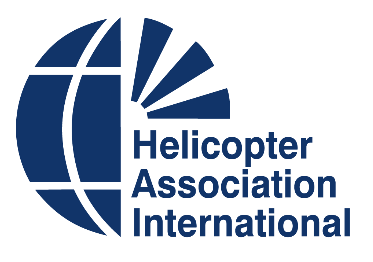New York City airspace is one of several highly complex and congested airspace regions in the United States. To ensure that operations are as safe and efficient as possible requires the expertise of regulatory and technical safety experts as well as industry professionals. Helicopter Association International (HAI) strongly opposes the “Improving Helicopter Safety Act of 2019,” announced Oct. 26, over the concern that measures within the act will have no positive effect on aviation safety over New York City, but will threaten the viability of the helicopter industry.
The perceived threat of commuter, charter and tourism helicopter flights that forms the rationale behind the proposal relies on data that representatives Carolyn Maloney, Jerry Nadler and Nydia Velazquez of New York had to reach back nearly four decades to gather. The crashes and resulting fatalities cited in the proposal are disingenuously positioned. Statistically, citizens on the ground are in far greater danger of being hit by a bicycle or motor vehicle. In 2018 alone, the New York City Department of Transportation reported 60,652 injuries and 203 fatalities involving motor vehicles. HAI’s top priority is and always has been safety, and along with its operators, we continue to work towards a zero-accident goal.
Furthermore, the claim that the Federal Aviation Administration (FAA) “does not have any regulations, policies or procedures to account for New York City’s uniquely crowded airspace” is false. Updated every 56 days, or as needed, the FAA publishes Helicopter Route Charts for several “uniquely crowded” airspaces — including Baltimore-Washington, Los Angeles and New York City — to further enhance operational safety. These charts consider the unique aspects of each operating area and provide guidance on standard routes, specific altitude limitations when appropriate, standard frequencies and mandatory reporting points. The latest Helicopter Route Chart for New York City was updated on April 25, 2019.
The proposal’s claim that there “is no minimum altitude for helicopters to fly at” and that commuter, charter and tourism flights are “generally not monitored or directed by Air Traffic Control” is only accurate in the most abstract reading of current regulations. To clarify, There are established altitude ranges for aircraft that operate within the New York Class B airspace — Hudson River and East River Exclusion Special Flight Rules Area (SFRA). These ranges allow for separation between transient operations and local operations and allow pilots the discretion to choose the safest altitude for their specific flight operation and environmental conditions. Additionally, local tour operations over New York
City fly established flight routes that standardize pending flight paths, altitudes flown, and frequencies used by all aircraft. Because of these pre-established parameters and limits in New York’s airspace, there is less need for direct interaction by air traffic controllers, although it is available when operations dictate.
The proposed “Improving Helicopter Safety Act of 2019” is, in fact, not an effort to improve the safety of commuter, charter and tourism flights, but rather, an attempt to completely dismantle a thriving industry. Under the proposal, these flights would cease to exist, and HAI’s members would lose their livelihoods.
“With an industry advancing in terms of both urban mobility and unmanned aircraft, these politicians are looking back, not forward,” said Matt Zuccaro, president of HAI. “There is no one more focused on safety than the helicopter pilots and operators themselves. These politicians’ draconian solution to the perceived threat of helicopters is to put an industry out of business. We want to sit down and work in good faith to address the concerns of all stakeholders at the table.”
HAI seeks to re-establish the New York City helicopter task force to improve communications and enhance partnerships amongst stakeholders. This task force will include elected officials, community representatives, local operators, regulators, industry professionals and technical safety experts. It is HAI’s hope that this taskforce will be able to develop solutions rooted in fact that will continue to safeguard the citizens of New York, the operations of HAI’s members and allay the concerns shared by representatives Maloney, Nadler and Velazquez. In conjunction with HAI’s partners at the Eastern Region Helicopter Council, HAI will be hosting a New York Helicopter Operations Symposium on Feb. 19, 2020.










Hopefully this group of politicians will contact the HAI for an open and honest dialogue. Unfortunately Political Hyperbole, is often times not supported by unbiased and factual information. Thus the concerns shared by representatives Maloney, Nadler and Velazquez, should be viewed as Political Hyperbole. Were these representatives sincere they would have reached out to the HAI for guidance on a practical solution.